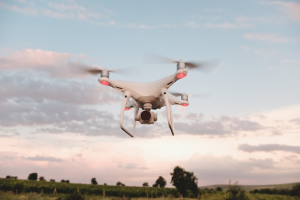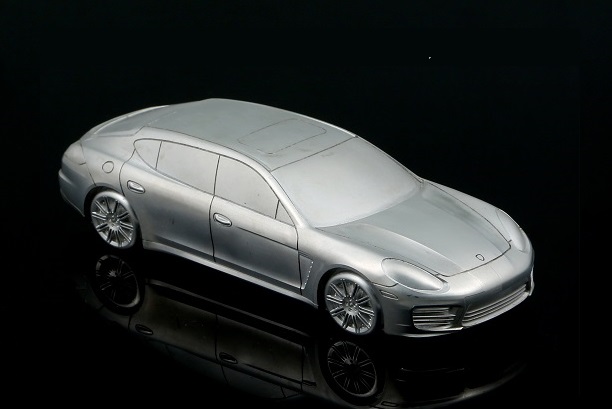- Over time, CNC machines have gained popularity in most manufacturing industries. These machines automate manufacturing processes such as cutting, drilling, milling and turning, all using computer numerical control (CNC) technology. CNC machines allow for the highly accurate and precise production of intricate designs and parts. There are several types of CNC machines, but most fall into the 3-axis or 5-axis categories. These two differ in their axes of motion capabilities. This article discusses the advantages and disadvantages of 3-axis and 5-axis CNC machines.
What is CNC?
CNC (computer numerical control) refers to the use of computers to control the motion of manufacturing machines. Most CNC machines perform functions that are also found on manual machining equipment, but instead rely on a computer program to direct the motion. This makes the movements of the cutting tool very precise and generally results in higher quality parts than those produced by manual drill presses, lathes, etc. For more information, see our All About CNC Machining guide: Process, Materials, Applications and Cost.
What is a 3-axis CNC?
A 3-axis CNC is a machine that performs machining operations by moving its tool or part along the X, Y, and Z axes. The cutting tool can be moved anywhere along the horizontal (X-Y) plane and cut into parts to specified depths (Z-axis motion). Figure 1 shows an example of a 3-axis CNC machine:
For more information, see our guide to types of CNC machines.

What can a 3-axis CNC do?
A typical 3-axis CNC machine can perform a variety of machining tasks, including cutting, drilling, and milling. Others are designed as CNC lathes. However, when it comes to part complexity, the limitation of these three axes means the machine has some distinct limitations. The best 3-axis machines are used to produce parts with simple geometries and minimal design or detail requirements. 2D and 2.5D parts are the best targets for 3-axis CNC machines.
What are examples of 3-axis CNC?
Examples of 3-axis CNC machines are
1.CNC lathes
2.CNC milling machines
3.CNC machine tool centers
These machines are widely used in industries such as automotive, aerospace, and electronics.
What are the advantages of 3-axis CNC machines?
The advantages of 3-axis CNC machines are as follows:
1.Cost-effective: 3-axis CNC machines are less expensive than 5-axis machines.
2.Easy to operate: 3-axis CNC machines require minimal training and are easy to operate. They are suitable for small to medium sized businesses because they are also easy to program.
3.Low maintenance: Compared to 5-axis CNC machines, 3-axis CNC machines have fewer moving parts, making them easier to maintain and less prone to wear and tear.
4.High accuracy: A variety of applications can benefit from the accurate and precise parts built on a 3-axis CNC machine.
What are the disadvantages of 3-axis CNC machines?
The disadvantages of 3-axis CNC machines are
1.Limited capability: Because there’s no way to automatically rotate the workpiece, 3-axis machines can only attack from certain angles. They work best for producing parts with simple geometries.
2.Limited efficiency: They are less efficient than 5-axis CNC machines because they require multiple setups to produce complex parts.
Is the 3-axis CNC not capable of creating 3D objects?
While 3-axis CNC machines can create 3D objects, there are some limitations. 3-axis CNC machines can produce 3D parts with clean and simple geometries, but not those with complex geometries and finely detailed designs.
What is a 5-axis CNC?
A 5-axis CNC machine performs machining operations along five axes of motion. It can move along the three linear axes (X, Y, and Z) and rotate around the other two axes (A and B). This extended range of motion allows the machine to create intricate geometries. Figure 2 shows an example of a 5-axis CNC machine:

What can a 5-axis CNC do?
A 5-axis CNC can create geometries that require multiple angles and contours. It can move the cutting tool along five axes, resulting in smoother surfaces and more accurate parts. A 5-axis CNC can also perform continuous milling, which allows the cutting tool to follow the curvature of the material and produce fewer marks and steps.
A 5-axis CNC machine can be used to produce parts such as: impellers, turbine blades, molds and aerospace components. In the aerospace industry, for example, it is used to create intricate shapes for aircraft engine components. 5-axis capability is also important for medical implants and prosthetics. For more information, see our guide to everything you need to know about CNC milling.
What are some examples of 5-axis CNC?
Some examples of 5-axis CNC machines are
1. 5-Axis CNC Continuous Machining Centers
2.5-Axis CNC Milling Machines
3.5-Axis CNC Routers
What are the advantages of 5-Axis CNC?
The following are the advantages of 5-axis CNC machines:
1.Increased efficiency: 5-axis machines can speed up production and improve efficiency. They can produce complex shapes and perform continuous milling operations.
2.Improved accuracy: You can produce smoother surfaces and more accurate parts because you can move the cutting tool along five axes.3.Fewer tool changes: Complex geometries are possible with continuous milling. This also means fewer tool changes. This continuous milling reduces the need for manual intervention and saves time.
4.Versatility: 5-axis machines can produce a wide variety of parts and geometries.
What are the drawbacks of 5-axis CNC?
Listed below are the disadvantages of 5-axis CNC machines:
1.Cost: 5-axis CNC machines are more expensive than 3-axis CNC machines, making them more difficult for smaller companies to afford.
2.Training: Due to their complexity, they require more specialized training and expertise to operate and maintain.
3.Maintenance: Regular maintenance is required to keep these complex machines running smoothly and prevent breakdowns.
Does 5-axis CNC have no angle limitations?
A 5-axis CNC machine can mill materials at almost any angle, but it does have some limitations. The length of the cutting tool, the nature of the material being milled, and the reach of the machine itself all affect the angles and dimensions that can be achieved. In addition, the cutting tool becomes less stable at more extreme angles, which can affect accuracy.
What is the difference between a 3-axis CNC and a 5-axis CNC?
A 3-axis CNC and a 5-axis CNC differ in their ability to orient and move the cutting tool along multiple axes. A 3-axis CNC can move its cutting tool along the X, Y, and Z axes. A 5-axis machine can move the cutting tool along the X, Y, Z, A, and B axes.
The price of the machine is another difference between the two. Of the two, the 3-axis version is far less expensive to purchase, program and operate. As a result, the cost per part is often lower.
Another key differentiator is the ease with which you can create and manipulate complex shapes. Even with complex geometries, 5-axis machines can make deep cuts. You can work on all sides of your part without manually rotating it, increasing productivity. A 3-axis machine, on the other hand, requires numerous adjustments to help the machine cut complex geometry.
How much does a 5-axis CNC cost compared to a 3-axis CNC?
Prices for 3-axis CNC machines range from $25,000 to $50,000, while 5-axis machines range from $80,000 to over $500,000. Costs vary depending on whether they are used for entry-level or production-level work.
How are 3-axis and 5-axis CNCs programmed?
Programming for both 3-axis and 5-axis CNC work is done manually by professionals. However, programming 3-axis machines is easier than programming 5-axis machines, so the latter usually warrants a higher-paid programmer. For more information, read our guide to What is CNC Programming?
Is the 3-axis CNC a better initial investment than the 5-axis CNC?
Yes! a 3-axis CNC is a better initial investment than a 5-axis CNC. It is more affordable in terms of purchase, development and maintenance costs.
Do CNC machines use a lot of power?
Yes!CNC machines use a lot of power. A 20-hp conventional CNC machine rated at 7 kw/hr can have a monthly electricity bill of about $1,400. However, some CNC machines are more energy efficient than others.
Conclusion
This article has introduced 3-axis and 5-axis CNC, explained what they are, and discussed the advantages and disadvantages of each. To learn more about 3-axis and 5-axis CNC, contact a MY Prototyping representative.
MY Prototyping offers a wide range of manufacturing capabilities, including CNC machining and other value-added services for all your prototyping and production needs. Visit our website to learn more or to request a free, no-obligation quote.
Disclaimer of Warranty
The contents of this website are for informational purposes only. MY Prototyping makes no representations or warranties of any kind, express or implied, as to the accuracy, completeness or validity of the information. Any performance parameters, geometric tolerances, specific design features, quality and types of materials, or processes should not be inferred to represent what will be supplied by third party suppliers or manufacturers through MY Prototyping’s network. Buyers seeking instant quotes for parts are responsible for defining the specific requirements for those parts. Please see our Terms and Conditions for more information.






